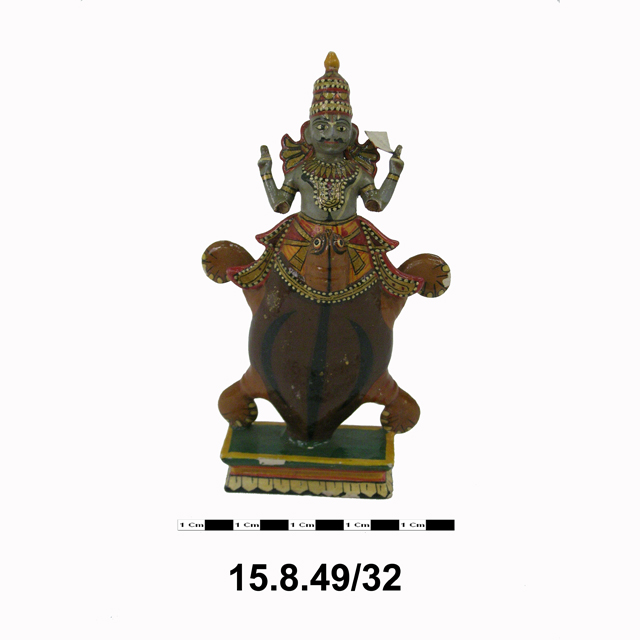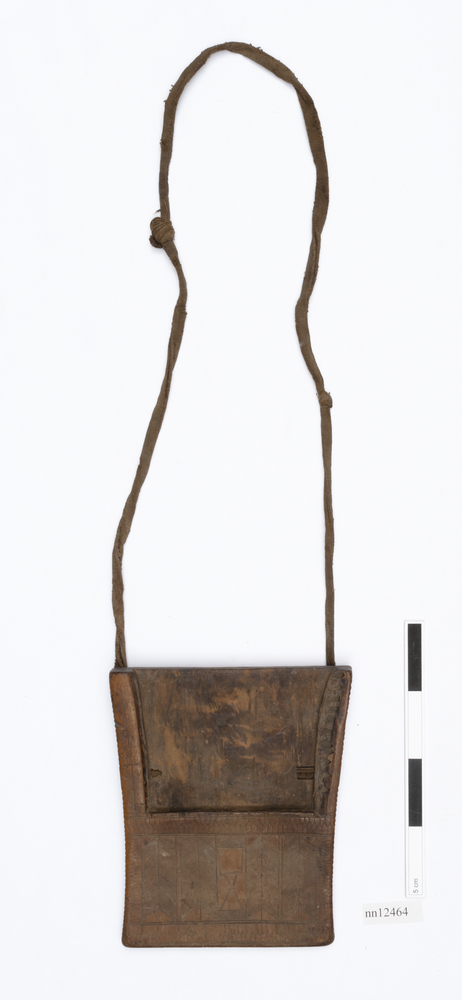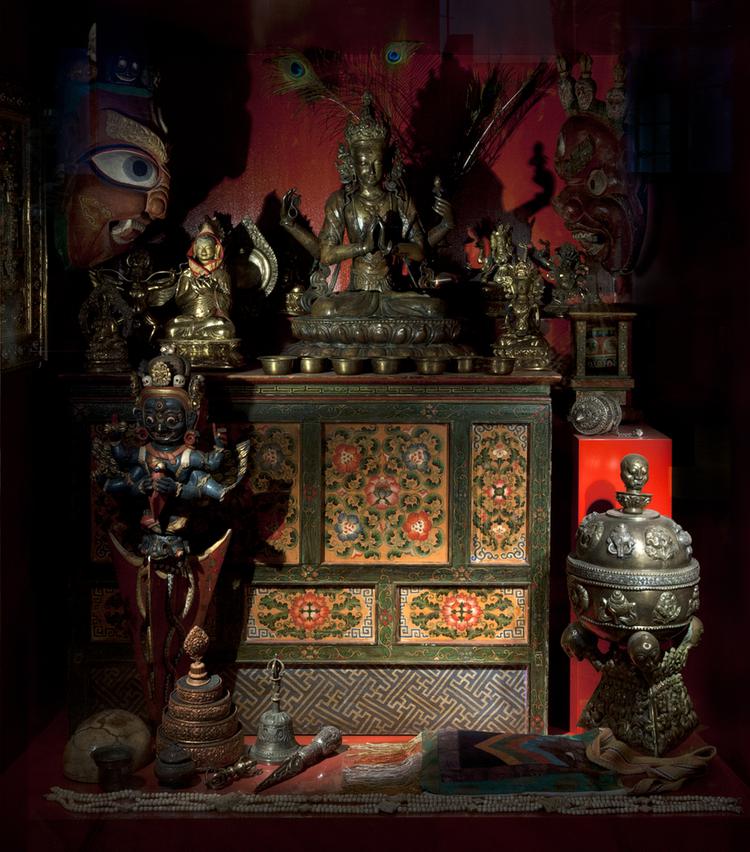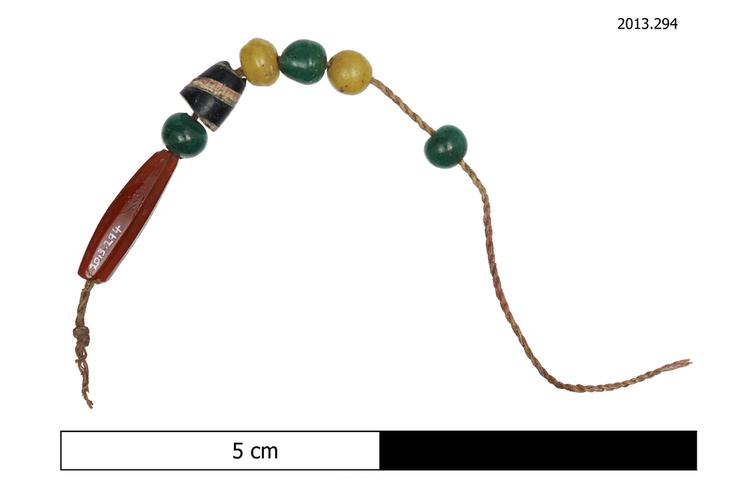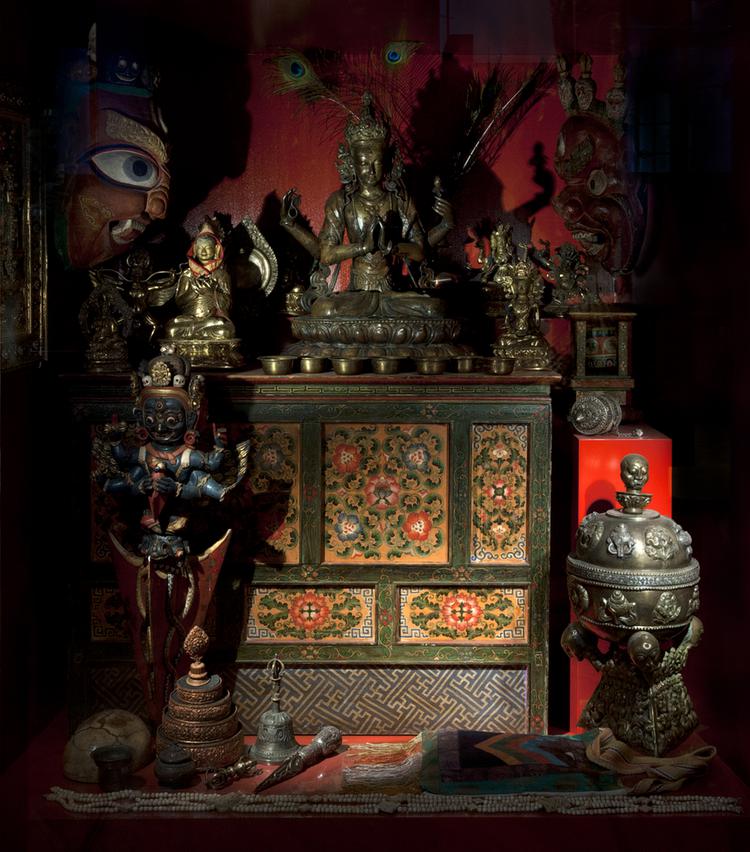
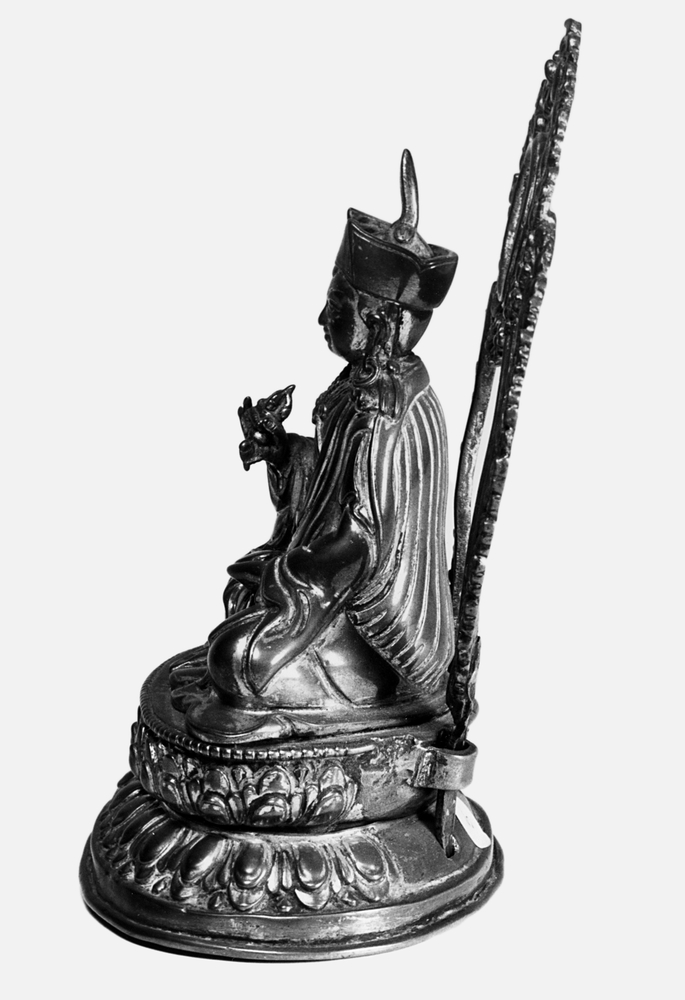
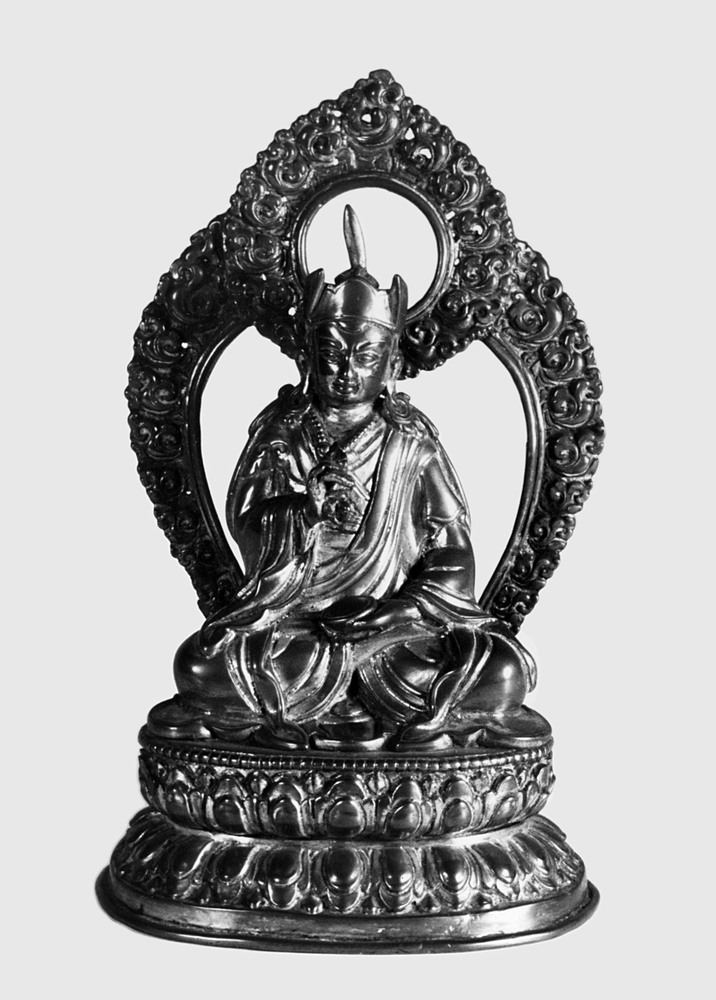
Figure of Padmasambhava (Tibetan: pe ma jung ne. English: Lotus Born) also known as Guru Rinpoche (Tibetan: slob – dpon English: Precious Teacher) here in his manifestation as a great teacher (= Guru Padmasambhava). This is one of the eight manifestations of Padmasambhava which shows him as a monk. He wears his characteristic adept’s hat and his body is covered by folded garments. His eyes are downcast as he holds a vajra in his right hand and a skull bowl in his left hand which lies flat in the gesture of contemplation. He is seated in the royal pose on a lotus pedestal and is surrounded by an aura (halo) which itself stands on the lotus base. 182h x 107w x 86d.
After the death of King Sron Tsan Gampo (ca 650 AD) Buddhism suffered in Tibet. When King Thi-Sron Detsan succeeded to the throne about a century later, he sent messengers to India to look for a Buddhist priest to revive Buddhism. Guru Padmasambhava, a tantric practitioner, was found in India, arriving in Tibet in 747 AD (travelling and influencing Sikkim on the way). He subjugated and tamed all local spirits and build Samye, the first Tibetan monastery. Within the monastic tradition the Nyingmapa school is considered the oldest school (ca 11th or 12th century established as an order) which directly traces its origin to Padmasambhava. Today Guru Padmasambhava or “the Lotus born one� is deified and worshipped as the “second Buddha.�



